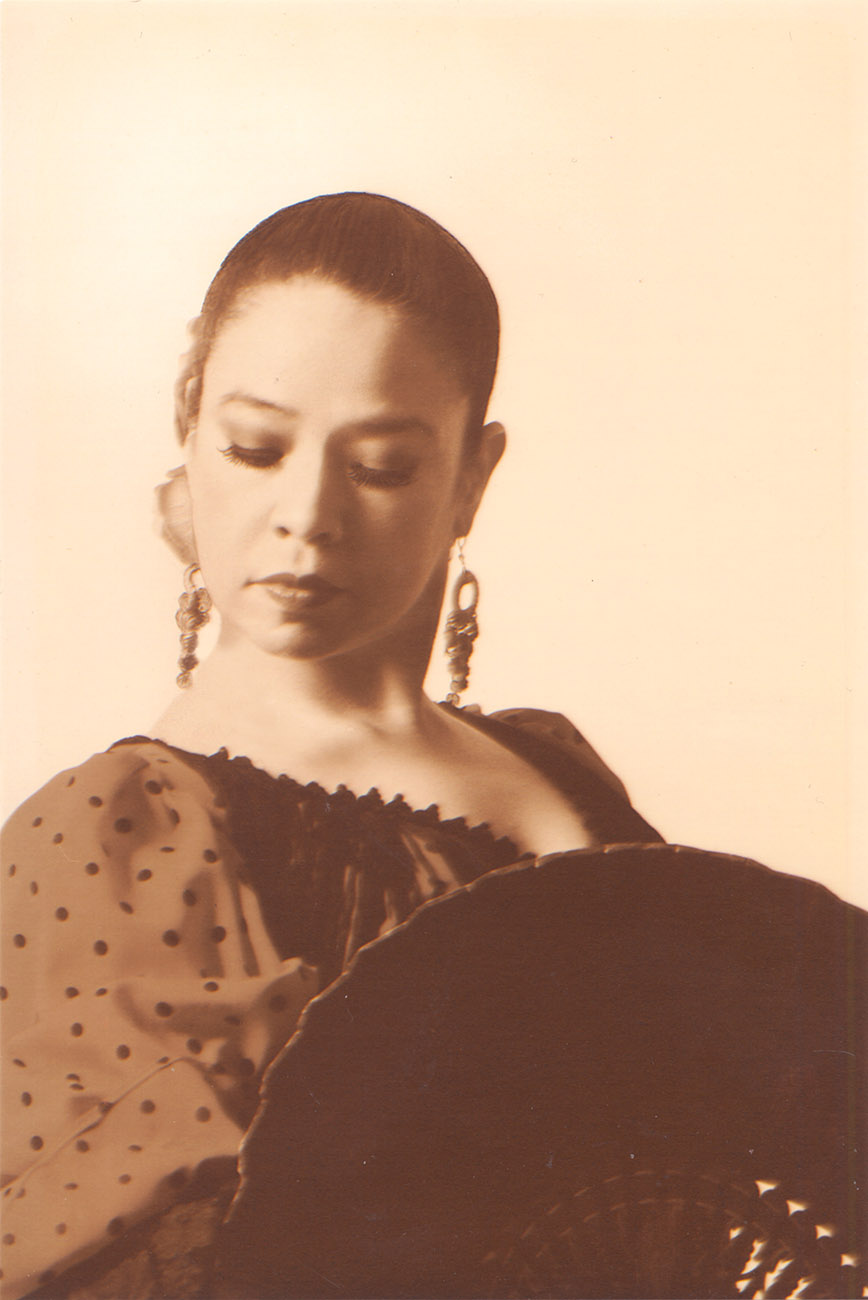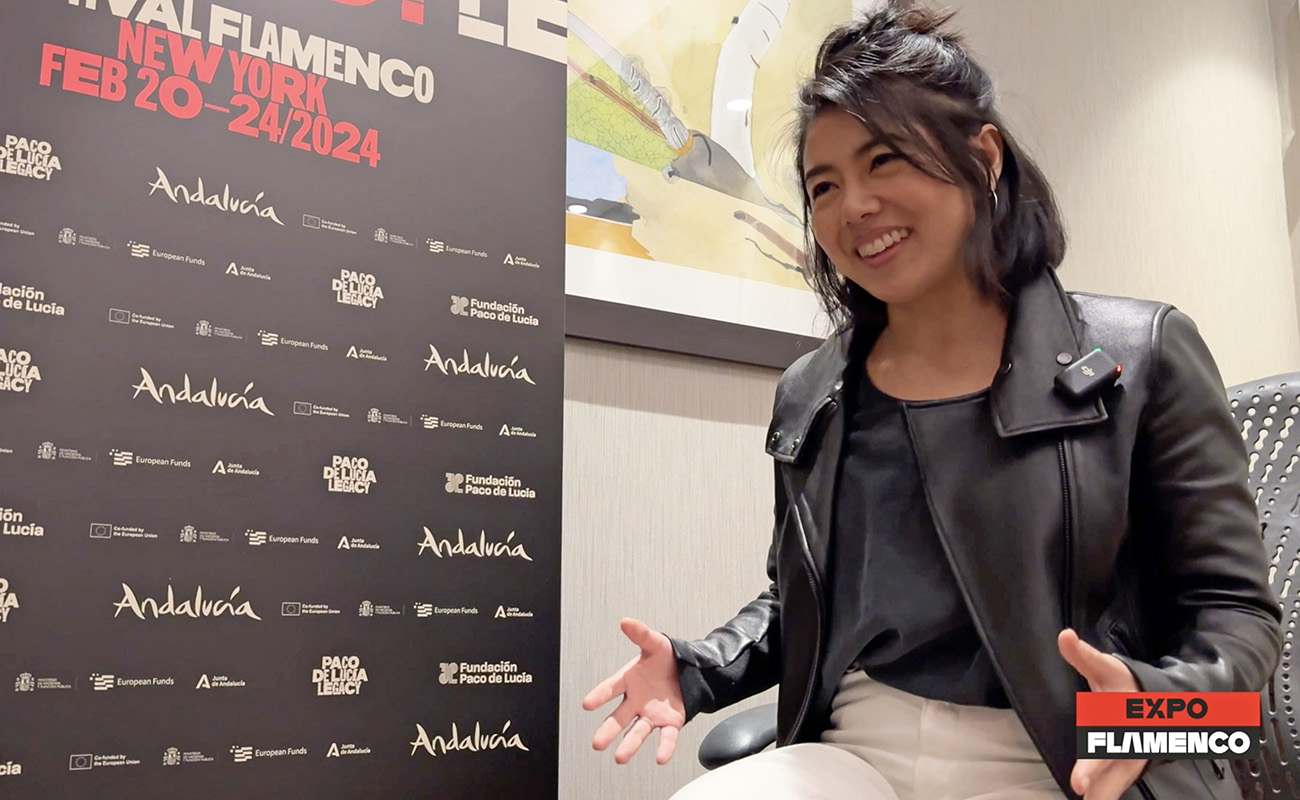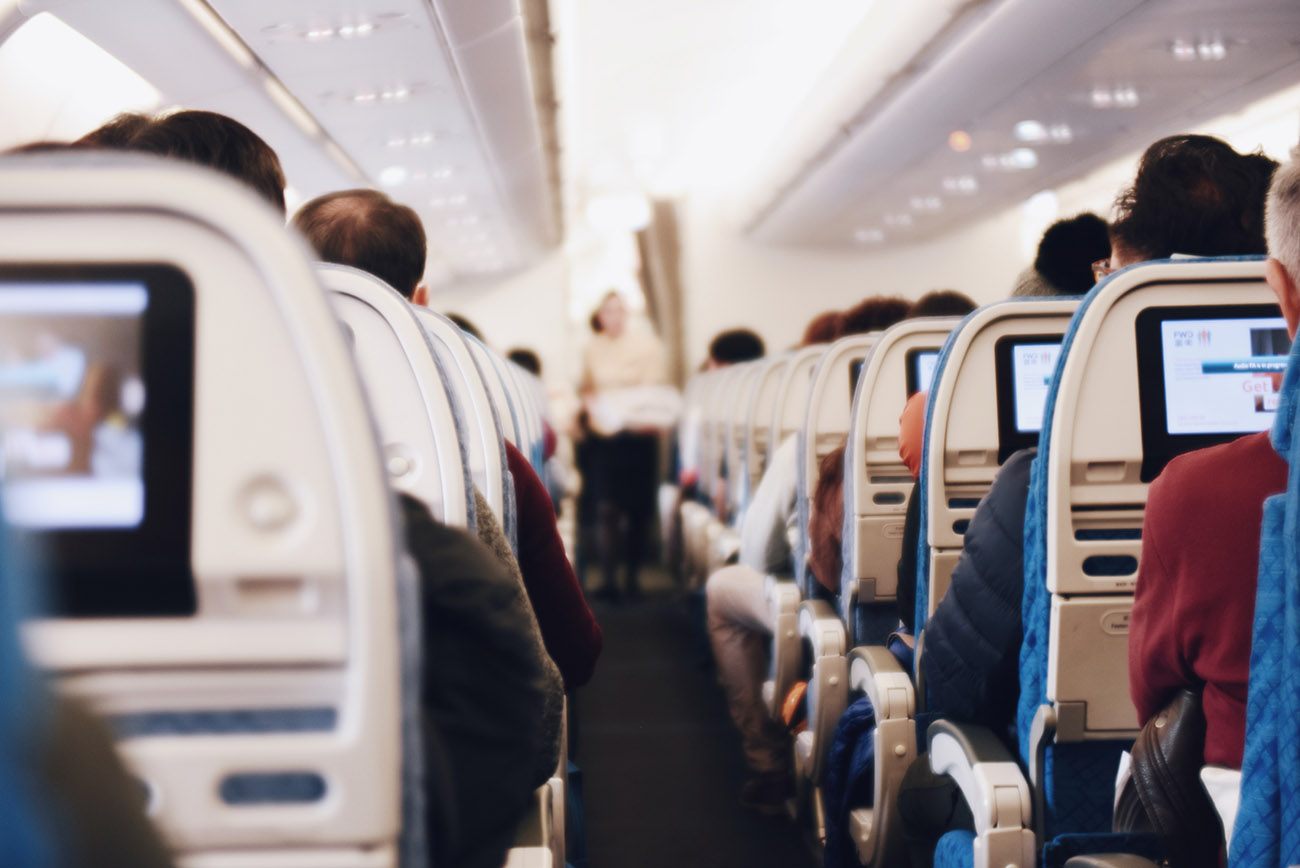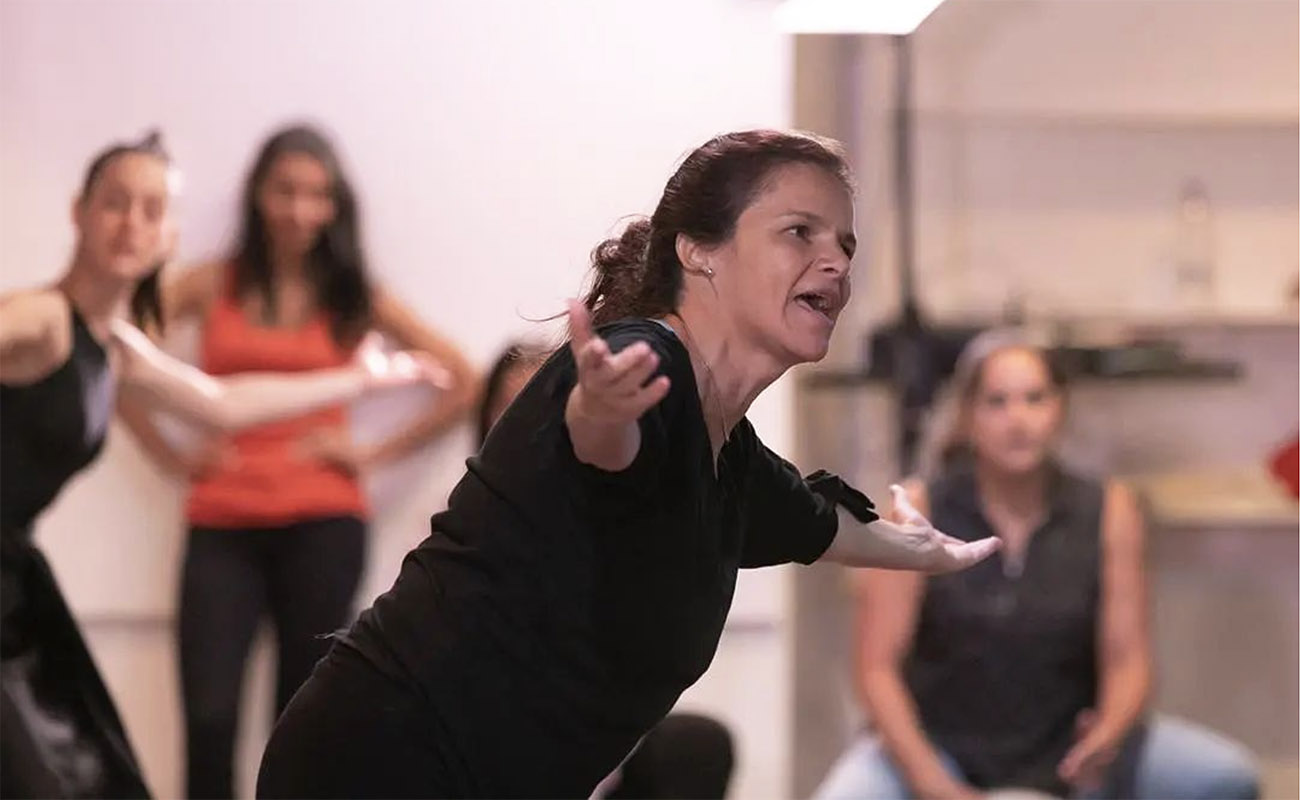Vibiana Pizano: «Pursuing flamenco was a natural progression in my dance life»
Interview with Vibiana Pizano, founder and president of Flamenco Arts Festival (Santa Barbara, California).
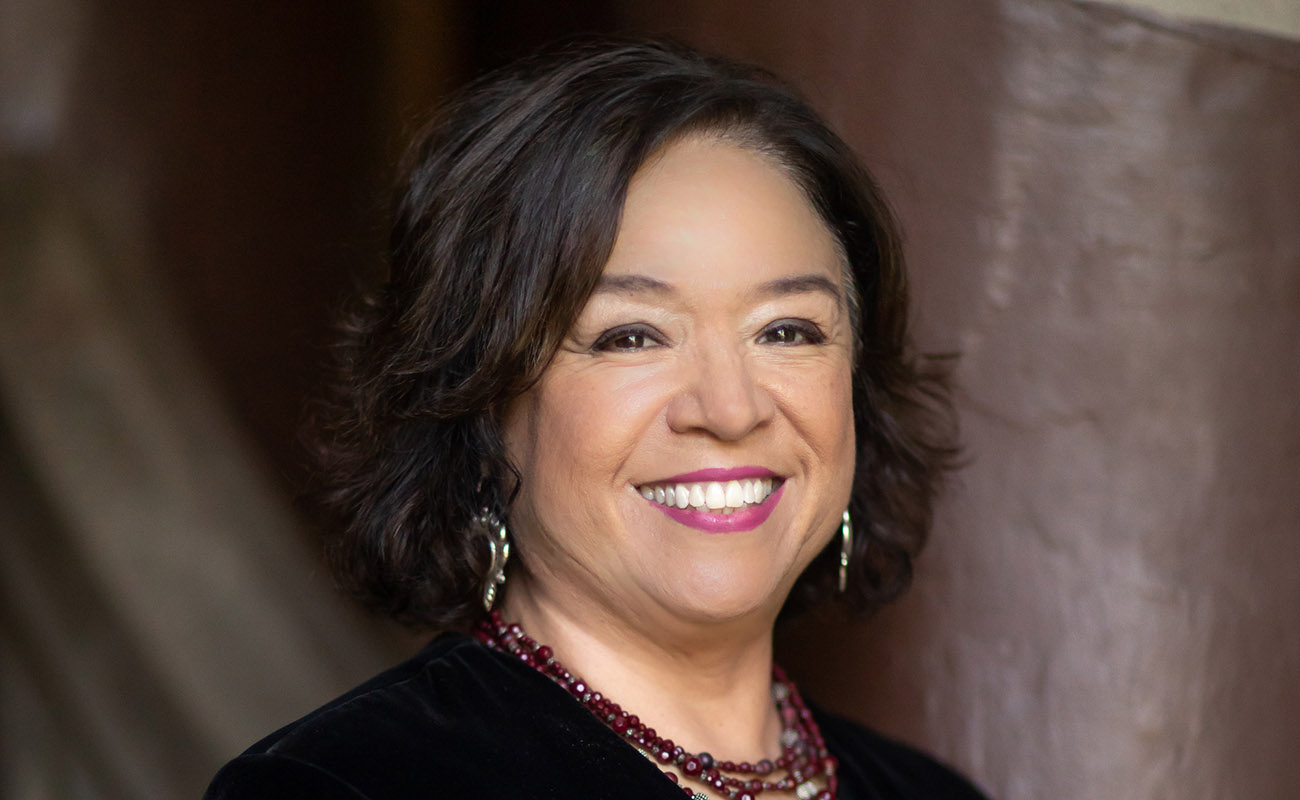
Vibiana Pizano, founder and president (1999 – present) of Flamenco Arts Festival (Santa Barbara, California), was introduced to Spanish dance and Mexican Folklórico at the age of four when her parents, during the mid-fifties, enrolled her in a dance school in West Los Angeles. The trip from East Los Angeles to the dance studio on West 24th Street and Vermont seemed like a long trip, but it proved to be one of the best investments her parents ever made.
At sixteen, in her efforts to refine and expand her dance skills, she developed an interest in flamenco and that interest prompted her to seek the best flamenco teachers working in Los Angeles. She enrolled in classes in Hollywood taught by Luisa Triana, who performed at the Lobero Theatre in 1962, and she also studied with Lola Montes. Though Vibiana little recognized it at the time, flamenco was to become an avocation that was to become part and parcel of who she is.
After moving to Santa Barbara in 1980 she continued her studies and performed in Santa Barbara and Los Angeles. In 1994, recognizing that there was a flamenco niche in Santa Barbara, she initiated the practice of inviting flamenco artists to conduct workshops in an effort to expose the local flamenco students to the stars and icons of flamenco. In the same year, during a trip to attend the Bienal de Flamenco de Sevilla, where all the flamenco artists of Spain and the world, gather to showcase their work, an idea crystallized in her mind. Sitting in the audience of Teatro de la Maestranza in Sevilla, she wondered if a flamenco festival was possible in Santa Barbara, a city that still maintains many of the legacies and traditions of its Spanish roots and has long been a natural and nurturing environment for the arts and especially flamenco. Thus the concept of the Flamenco Arts Festival was born in that darkened theater in Sevilla.
With the support of her father, Alberto Pizano, the Festival was incorporated in 1999 and staged its first edition in 2000 at the Lobero Theatre in Santa Barbara.
– You were exposed from an early age to Spanish Dance and Mexican folklore. Do you remember what was the most impactful thing about flamenco that made you pursue this art form?
– Pursuing flamenco was a natural progression in my dance life. I am Mexican, born in East Los Angeles, and I was surrounded by Mexican music and dance, and Spanish dance and flamenco was always there and just another aspect of my life and culture. Just like in Spain, I was exposed to it from an early age, so there was never an “aha” moment. My children, because they were exposed to flamenco from birth, and because Santa Barbara has a rich flamenco history, they also danced and lived and studied in Spain for several years. My son studied with many great artists including Mario Maya and danced professionally in tablaos in Granada, and in Sevilla at the Museo del Baile Flamenco Cristina Hoyos.
– How did maestras Luisa Triana y Lola Montes influence your baile flamenco?
– They were very strong women and dancers, and strict in the way they taught flamenco. They were my very first flamenco teachers and I quickly realized I had a lot to learn and that flamenco would be much harder to master than Mexican folk dancing. But they also gave me compliments and so I believed I was good at it, and those compliments encouraged me to keep dancing and learning. However, because these two women were very strong technically, I realized that it wouldn’t be my technical ability, but rather my passion for the art form that would help me succeed.
– Who were the Spanish flamenco artists you brought to California in 1994? Where in Spain were they from?
– In the mid-nineties I began organizing flamenco dance workshops in Santa Barbara, with the goal of providing young students the opportunity to study with top tier flamenco artists in the very prime of their careers. From the beginning, the workshops were a phenomenal success. Exposure to these guest artists from Los Angeles, San Francisco and Spain, not only strengthened bonds between parents and students from different local dance studios but enhanced the student’s dance education through the teaching of contemporary techniques and choreographies. One of the first artists we brought from Spain was Belen Maya from Sevilla. Her arrival in Santa Barbara was met with great anticipation, and I believe it was around the time that Carlos Saura’s iconic film ‘Flamenco’ had been released and was receiving rave reviews internationally. Belen was not only featured in the film alongside her father, Mario Maya, but also served as the inspiration behind the film’s promotional poster.
– You organized the first flamenco festival in California in 1999. What were the major obstacles to overcome to make this happen?
– My family was very involved in the community and my father, Alberto, helped to make it happen. He was very interested in the arts in general and he founded the Santa Barbara Mariachi Festival in 1995 before helping me to create the FAF. He was the first president of the FAF until his death in 2015. The first major obstacle came immediately in 2001 with 9/11, followed by recessions, fires, mudslides, and then a global pandemic. In second place, is the visa process. The one thing that made us believe a flamenco festival in Santa Barbara would be welcomed is because it is Santa Barbara. It is so rich in flamenco and Spanish traditions. I don’t know of any other city in the U.S. that is as beautiful and that has the same look and feel as Spain with its architecture, red tiled roofs, paseos, and homes and street names, and its Spanish traditions that go back decades to the 1920’s maybe earlier.
– Who were the first artists to perform in that Festival?
– The first company that performed for the FAF in 2000 was Nuevo Ballet Español with Angel Rojas and Carlos Rodriguez. They were very young and had just established their own dance company. We flew to Spain to see them perform based on a recommendation from my son, Pablo, who was living and studying flamenco in Madrid at the time. We were blown away at the freshness of these two exceptionally talented dancers and the production quality of the show. When they performed in Santa Barbara, it was a thrilling experience, and they received many standing ovations. After that, I remember thinking that the FAF was going to be okay. In 2001 it was Eva Yerbabuena, then in 2002 it was Javier Baron who was unable to appear because of 9/11 the previous year and the changes and delays in the visa process. After that it was Cristina Hoyos, Israel Galvan, Rafael Campallo, Antonio Najarro, Rafael Amargo, Maria Juncal, David Pena Dorantes, Andres Pena and Pilar Ogalla, Jesus Carmona, Manuel Linan, Patricia Guerrero, Eduardo Guerrero, and more.
– How was flamenco perceived in California as an ambassador of Andalusian culture?
– Flamenco is perceived extremely well in California and has been for decades. There were many artists who performed here and throughout the U.S., including I believe, La Argentina, and today flamenco is studied and performed world-wide. There are many practitioners and working professionals in California who are doing amazing work every day, keeping the art form strong and at the forefront, and I commend them for keeping this art form alive and well, even through the pandemic.
– Are there other cultural organizations that provide financial support for the Flamenco Arts Festival?
We have been blessed to have many sponsors over the last 23 years and currently Javier Mañas from the Tourist Office of Spain in Los Angeles has been a wonderful supporter of the FAF for the last 5 years. This year we received our first state grant from the California Arts Council which is a big accomplishment because it was a very competitive process. On top of that, we have the support of corporations and individuals, and many partners, but we welcome anyone who may be interested in supporting our efforts. Contact us!
–Do you believe there is a difference in the way Latin-American artists approach flamenco, compared with their Spanish counterparts?
– I don’t see much difference, but one similarity is the shared language which, if you are just starting out, makes it easier to study the art form. But Mexico has a huge flamenco community and I see the same approach there as I do in Spain.
– Are you still active as a bailaora?
– I no longer perform professionally but feel fortunate to be in the position I’m in now, promoting the art form of flamenco, its most celebrated dancers, singers, and musicians, as well as the current group of students in Santa Barbara. But just between you and me, I still dance in my seat when I see an exceptionally talented dancer perform. Ole!
– Do you enjoy cante jondo?
– Flamenco cante, in general, was hard for me to understand in the very beginning. But I realized along the way, that it was so important to the way I interpreted a dance. I’m not sure young dancers understand that part, because like me at a young age, I was preoccupied with learning the choreography. Having a good grasp of the music is one area of training for young dancers that sometimes, not always, gets overlooked.
– Have you noticed any difference in the way the public in California perceives flamenco, since the first Flamenco Arts Festival was held in 1999?
– Over the years, people have approached me during the festival and said “Thank you for bringing these artists to Santa Barbara. The shows were phenomenal and the artistry at the highest caliber.” I hope we are making a difference. Our goal from the very beginning was to provide world-class entertainment, but also provide an educational component to our programs that increases the knowledge, interest, and appreciation of the art form not just for aficionados, working professionals, and students of flamenco, but also for the larger community. We attract many people with little to no flamenco experience or exposure and we make an effort to attract new audiences each season from all corners of the country and abroad.
– Are there students or aficionados of flamenco guitar and cante in Santa Barbara?
– Yes. Another priority for the FAF is to provide exposure, not only to flamenco dance, but flamenco music. In 2001, we presented a musical group called Cañadu, then David Pena Dorantes in 2010, Andres Vadin in 2019, and now Pedro Ricardo Miño and Makarines. To enhance the concert experience, the FAF offers music workshops and every year we add more classes to our music training and FAF programming. We have seen an increase in attendance numbers to these workshops for guitar, cajon, and singing/palmas and our goal is to keep building our music program over the next three years with performances and classes.
Photos: courtesy of Vibiana Pizano
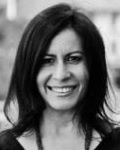
Jafelin Helten




